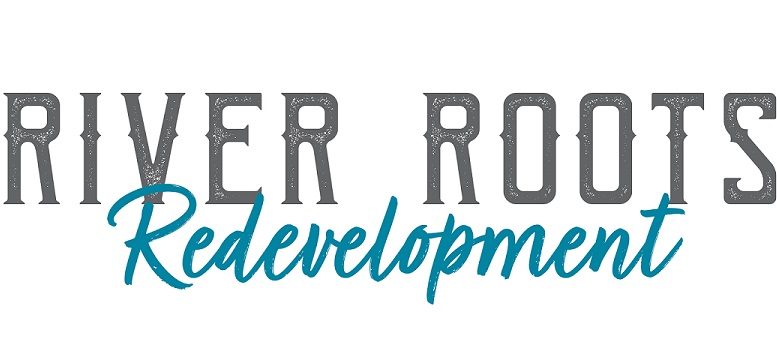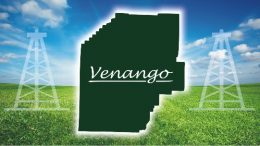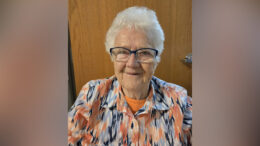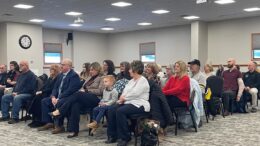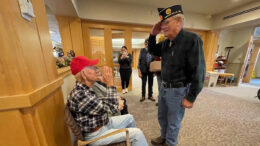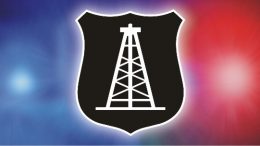The floodwaters had receded, but the scars they left behind were everywhere. Mounds of black garbage bags lined the roads, filled with remnants of lives once lived—family photos, graduation gowns, children’s toys. Broken trees and shattered belongings formed endless piles, each one whispering a story of loss.
Our team of 26 volunteers from multiple churches came together with one goal: to give Kim and her grandson Spencer a home again after theirs was destroyed. The flood had nearly reached the ceiling, taking with it everything they owned. On a previous trip, the house had been gutted, with the electric and plumbing roughed in.

Our team worked inside and out, replacing insulation, siding, drywall, flooring, and cabinets, and clearing the old building materials, debris, and remnants of what had once been a home. With the bulk of the cleanup complete, a few of us set out to find others in need. We had brought a trailer full of donations—winter jackets, gloves, toys, blankets, heaters, and propane—and wanted to deliver them where they were most needed.
While out scouting, we stopped in the little convenience store where it seemed locals like to gather. We asked if anyone knew of someone else we could help. The woman behind the counter, Renee, said, “Yes! I need help!” A couple weeks before the hurricane her husband, Dean, had a heart attack. In addition, the new quarter-of-a-million dollar high-water bridge that they and other family members had just put all their savings into was swept away in the flood. To get to their house, they now had to drive through the river. Thankfully, they are able to stay with their son temporarily, but they hadn’t been able to clean up at all.
We agreed to take a look and see how we could help. Dean drove us across the river in their SUV and showed us around. As he walked us through his yard, the devastation became clear. The river had swallowed yards of land, leaving his septic tank perilously close to the edge. He pointed out a rock in the river’s center—his yard used to extend beyond it. He warned us to stay behind the large cracks in the yard showing where more land could fall off into the water at any moment. He showed us the pavers that had been swept into the yard by the rushing water and the porch post pushed out of place. He took us inside and showed us the waterline on the wall and the mud still on the floor.
You could feel the tiredness, sadness, and hopelessness that not only Dean and Renee, but so many others must be facing, as well. Defeat.
We snapped a few photos to report back to the team and returned across the river. We gathered with the rest of the women on the team and formed a plan.
The next day, our group headed to Dean and Renee’s house ready to get to work. We took our tools across the river in a wheelbarrow over a footbridge just down river of the house and got right to work. We shoveled and scrubbed and scraped and mopped. A short while later Dean and Renee joined us, followed by another couple we assumed were friends of family. It turned out that they were part of another group and had just showed up to help. As time went on, you could see hope returning. Dean began to share stories about building his house, the treasures he’s collected over the years and even the gospel group he used to be in. After lunch a few of the guys joined us to reset the pavers and fix the porch post.

At the end of the day, Dean and Renee drove the last few of us back across the river to our car and showed us more of what their life had been like and how the floodwater had now changed the land and life.
Even after seeing the devastation firsthand—crushed vehicles, washed-away roads, homes destroyed by landslides—I can only imagine what it’s like for those who lived through it. Many have lost everything, some even their loved ones. Yet, what stays with me most is the spirit of this community and how small groups of people from around the country have shown up to help. We met some volunteers from Lancaster, and groups like “We the People,” “Samaritan’s Purse,” and “True Hope Disaster Relief”. For every pile of debris, there’s someone working quietly to rebuild—not just homes, but hope. It’s a reminder that even in the darkest times, we can choose to be part of the light.

